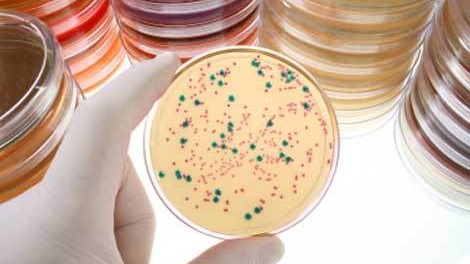
Q: Can PCR products generated with GoTaq DNA Polymerase be used to for T- vector cloning?
A: Yes. GoTaq® DNA Polymerase is a robust formulation of unmodified Taq Polymerase. GoTaq® DNA Polymerase lacks 3’ →5’ exonuclease activity and displays terminal transferase activity that adds a 3′ deoxyadenosine (dA) to product ends. As a result, PCR products amplified using GoTaq® DNA Polymerases (including the GoTaq® Flexi and GoTaq® G2 polymerases) will contain A-overhangs which makes them suitable for T-vector cloning with the pGEM®-T (Cat.# A3600), pGEM®-T Easy (Cat.# A1360) and pTARGET™ (Cat.# A1410) Vectors.
Q: Can GoTaq® Long PCR Master Mix be used for T-Vector Cloning?
A: Yes, it can. GoTaq® Long PCR Master Mix utilizes recombinant Taq DNA polymerase and a small amount of a recombinant proofreading DNA polymerase (3´→5´ exonuclease activity) to enable amplification of long targets. These long PCR products can be successfully ligated into the pGEM®-T (Cat.# A3600), pGEM®-T Easy (Cat.# A1360) and pTARGET™ (Cat.# A1410) Vector Systems.
Tip: For cloning blunt-ended PCR fragments into T-vectors, use the A-tailing protocol discussed in the pGEM®-T and pGEM®-T Easy Vector Systems Technical Manual #TM042.
Promega scientists have demonstrated that GoTaq® Long PCR Master Mix successfully generates DNA fragments that can be ligated into pGEM®-T Easy Vector System without an A-tailing procedure, and with ligation efficiencies similar to those observed with the GoTaq® Green Master Mix. Read more about some of their work, here: https://www.promega.com/resources/pubhub/using-gotaq-long-pcr-master-mix-for-t-vector-cloning/
Q: How do I prepare PCR products for ligation? What products can be used to purify the DNA?
A: The Wizard® SV Gel and PCR Clean-Up System (Cat.# A9281) can be used to purify PCR products prior to T-vector cloning. It may be possible to successfully clone PCR products directly without prior purification in cases where a single amplification product is generated. However, even if no extraneous bands are visible, there may be some primer-dimers present in the reaction which can result in unacceptably high numbers of clones containing primer-dimer instead of the fragment of interest.
Q: What factors affect transformation efficiency? How do I determine the efficiency of my competent cells?
A: Ligation of fragments with a single base overhang can be inefficient, so it is essential to use cells with a transformation efficiency of at least 1 × 108cfu/µg DNA in order to obtain a reasonable number of colonies.
Here is how you can determine the efficiency of the competent cells used for transformation:
Transform 100μl of competent cells with 0.1ng of uncut plasmid DNA. Any standard plasmid of known concentration can be used for this purpose. Add 900μl of SOC medium to the reaction after transformation to provide a final concentration of 0.1ng DNA/ml. Take an aliquot and dilute 1:10 with SOC medium to give a concentration of 0.01ng DNA/ml. Plate 100μl (0.001ng DNA) of this dilution on appropriate agar plates.
If an average of 200 colonies are obtained, the transformation efficiency is calculated as
200cfu ÷ 0.001ng = 2 × 105cfu/ng = 2 × 108cfu/μg DNA
If you are using JM109 High Efficiency Competent Cells purchased from Promega, or competent cells from another source, it is important that you follow the appropriate transformation protocol for your competent cells. Selection for transformed host cells should be on LB plates with the appropriate antibiotic and IPTG/ X-Gal added at the appropriate concentrations. For best results, we recommend using plates that are less than 1 month old.
Q: How do I screen for recombinants in T-cloning?
A: An easy way to identify potential recombinants is with an initial blue/white colony screen. Recombinants may be analyzed further by techniques such as restriction enzyme analysis or small-scale PCR screening.
Q: I’ve used blue/white screening to identify T-cloning recombinants. Why do my recombinants appear blue?
Blue/white colony screening relies on disruption of the lacZ gene. Although the pGEM®-T Vector Control DNA will produce recombinants that generate white colonies, insertion of other DNA fragments into the lacZ coding sequence may not result in white colonies unless the fragments disrupt the lacZ reading frame. Although blue recombinants tend to occur most frequently with PCR products of 500bp or less, inserts of up to 2kb have been reported to result in blue colonies. For this reason, Promega recommends performing a control ligation without insert DNA. After transformation, if the control ligation without Control DNA produces fewer blue colonies than the experimental ligation, this strongly suggests that the insert of interest has been cloned but has not sufficiently disrupted the lacZ coding sequence.
Tip: Storing the plates overnight at 4°C will cause the blue colonies to become darker, which will help discern the recombinants you’re looking for.For more information on these methods and the topic of cloning, consult the Cloning section of Promega’s Nucleic Acid Analysis Guide. Helpful videos about cloning, and many other topics, are available on the Promega YouTube page. As always, Promega Technical Services Scientists are also here to assist you in troubleshooting your experiments, at any time.
Latest posts by Leah Cronan (see all)
- Mass Spec for Glycosylation Analysis of SARS-CoV-2 Proteins Implicated in Host-Cell Entry - November 10, 2020
- Proteomics from a Different Point of View: Introducing ProAlanase, the Newest Mass-Spec Grade Protease from Promega - August 7, 2020
- Go fISH! Using in situ Hybridization to Search for Expression of a SARS-CoV-2 Viral Entry Protein - July 10, 2020
